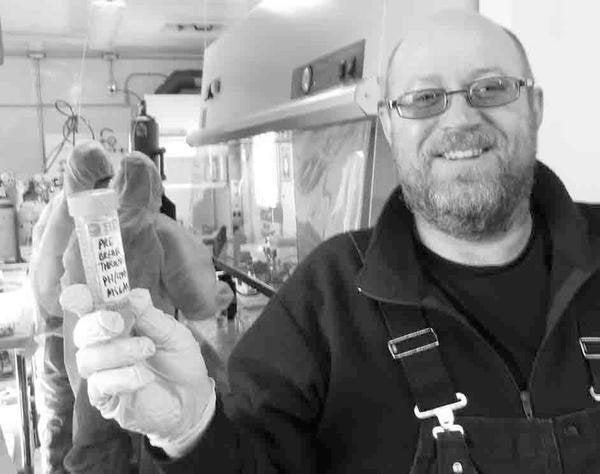
By: Becky Oskin, OurAmazingPlanet Staff Writer
Published: 01/30/2013 01:19 PM EST on OurAmazingPlanet
Scientists have the first hints of life from a lake long trapped beneath tons of Antarctic ice.
Water retrieved from subglacial Lake Whillans contains tiny cells, and they respond to DNA-sensitive dye, Discover magazine reported. This initial test is a good sign the lake may harbor life. Further experiments in Antarctica, and with samples shipped back to the United States, will reveal whether the microscopic cells are truly alive.
Working out of shipping containers stationed above the lake, a U.S. team pulled its first samples of mud and water Monday, making the Whillans Ice Stream Subglacial Access Research Drilling mission a success, the researchers said on the WISSARD project's website.
"This effort marks the first successful retrieval of clean whole samples from an Antarctic subglacial lake," the researchers wrote.
Lake Whillans is 2,625 feet (800 meters) below the West Antarctic Ice Sheet.

The WISSARD drill in Antarctica. The research team retrieved the first fully intact water samples from a subglacial lake this week. The water held hints of life.
The U.S. effort was one of three attempts during this southern summer to drill into buried lakes in Antarctica. The others were at Lake Ellsworth and Lake Vostok. Of the three lakes, Whillans was closest to the surface, by more than a mile (2 kilometers).
Great Britain's Ellsworth mission was called off when technical difficulties prevented the drillers from reaching the water. A Russian-led Vostok effort found organic material last year, but it was determined to have come from the drill fluid. Results from this year's Vostok expedition have not yet been announced.
Though Lake Whillans is entombed in ice, it is not as isolated as deeper lakes such as Ellsworth and Vostok. Flowing streams between the bottom of the ice and bedrock bring fresh water, mud and sand into the Whillans basin. But researchers with WISSARD think the small lake (just 1.2 square miles, or 3 square kilometers, in area) has not had direct contact with the atmosphere for many thousands of years.
Reach Becky Oskin at boskin@techmedianetwork.com. Follow her on Twitter @beckyoskin. Follow OurAmazingPlanet on Twitter @OAPlanet. We're also on Facebook and Google+.
